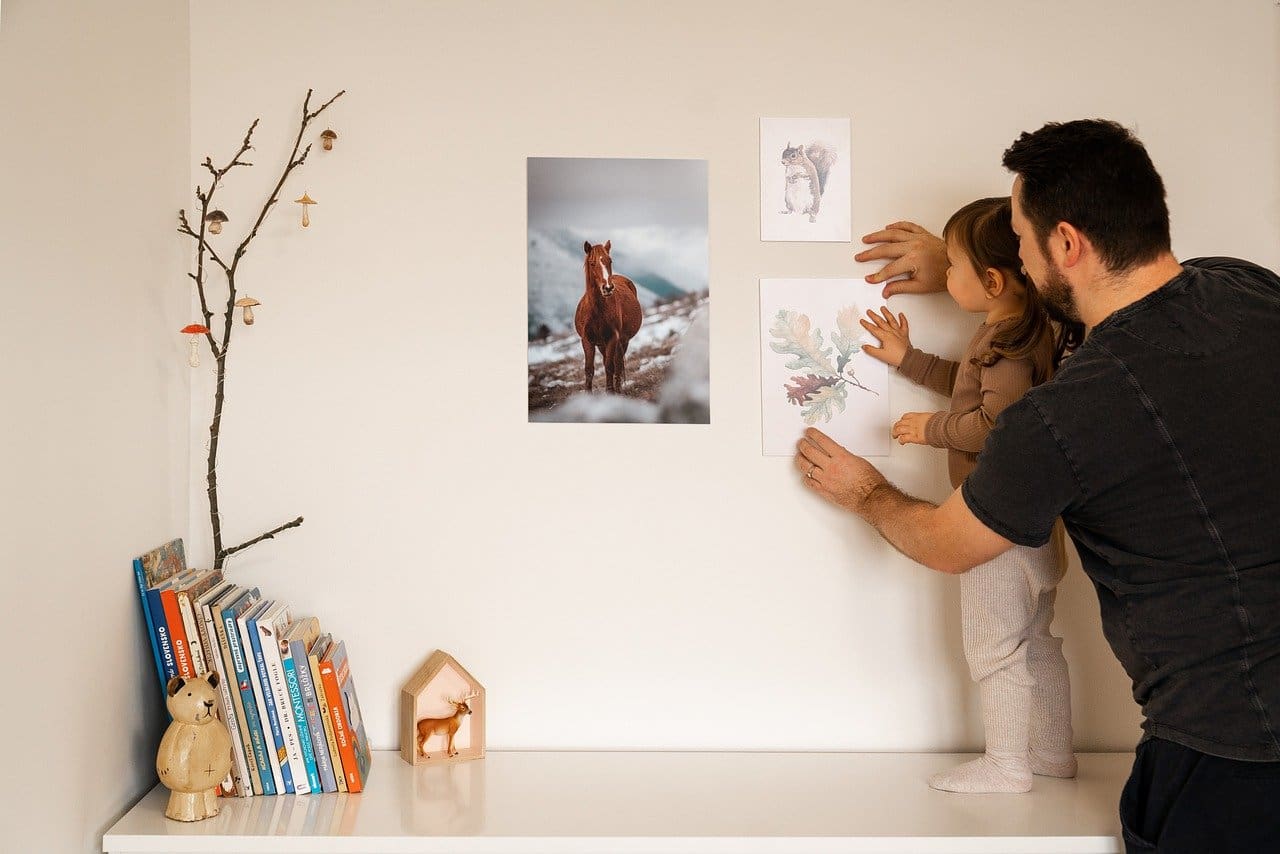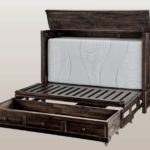Whether you’re a seasoned artist trying to make prints or a design enthusiast seeking the best approach to renovating your home, this book will provide you with all the information you need to comprehend the various sorts of patterns and how to choose the ideal one for your objectives.
A rundown of the many printing methods and supplies available and design advice will be included. Excellent options for printing techniques are giclée, lithography, and digital printing. There are also recommendations for the perfect print to hang in your home. With this information, you may choose a pattern that complements your style and the occasion.
Contents
Overview of prints
From modern pictures to prehistoric cave paintings, prints can be found all over the history of art. However, the selection and caliber of prints available have also improved along with printing technology. In this thorough reference, you will discover all the information you require about the many images available today, including details on each type’s unique properties, intended uses, and functional printing methods.
We will discuss where to find the best deals on paper, how to choose the perfect print for your home or place of business, and other relevant printing and design subjects.
Digital prints are currently among the most popular image formats. Film negatives are unnecessary because they are created by transmitting a digital file directly to a printer. Canvas, wood, metal sheets, and other surfaces can all be printed using the files. True to the source image file, digital prints have fine details and brilliant colors.
Applying oil- or wax-based ink to metal or porous stone printing plates was the process of lithography, one of the first printing techniques. The ink is laid down, and the image is transferred to the paper through a roller press machine. Because of the unique textures and subdued color shifts they use, lithographs create beautiful, classic artwork.
With the “Giclée” technique, a digital photo is printed almost precisely like the original using an inkjet printer to create tiny dots of pigment-based ink onto canvas or archival paper. For limited edition series or art reproductions, giclée prints are ideal due to their vivid colors and high level of detail.
With a scoop knife—a device resembling a squeegee—ink is forced through fine-mesh screens placed on paper or fabric to create printmaking. The finished textures and colors are unique despite the lengthy process requiring a different screen for every layer. It helps to be well-versed in the distinctions between various print kinds so that you may choose wisely, whether you’re searching for little accents or large focus pieces for your walls.
Popular types of prints
Throughout the millennia that it has been performed, printmaking has developed to include numerous well-known techniques. Whichever of the lithographs, giclée prints, or digital prints you choose will depend on your unique taste.
You must learn how to print and make quality material purchases to create photographs that look like a professional printer created them. Beautiful prints can be produced repeatedly provided the correct materials are utilized and design considerations like size, form, color scheme, composition, lighting effects, etc., are carefully considered.
Printing processes and materials
Printmaking requires specialized equipment and methods. A few techniques that can produce eye-catching graphics are offset printing, digital printing, and others. We will discuss the many forms of photography in this article and the methods used to create them.
Digital printing has become incredibly popular due to several factors, including its inexpensive starting cost, short turnaround time, and excellent print quality. What inkjet and laser printers do is project an image from a computer onto a surface (paper, canvas, vinyl, fabric, wood, metal, plastic, or glass, for example). How accurately the contents of a digital print job are reproduced in the CMYK (cyan, magenta, yellow, and black) color space depends on the resolution of the work.
Offset printing is another popular method in which ink is transferred from a plate to a cylinder covered in rubber before being applied to paper or another substance. Fast and practical, this strategy is frequently used for large-scale endeavors like publications and posters. Besides the standard CMYK inks, Pantone spot colors can be used in offset printing for even more vibrant results.
Giclée prints, an excellent type of digital print made with archival inks on canvas or watercolor paper, are gaining popularity. Replicating paintings or photographs from the originals using giclées is an excellent idea because of the inks’ archival quality and the prints’ long lifespan. Giclée prints on stretched canvas have the added benefits of being more durable and textured.
Screenprinting is one kind of printmaking, while lithography uses oil-based inks on aluminum plates or lithographic stones to create crisper details and bolder lines. Although lithographs can be produced quickly, only a small number can be produced at once since each stone must be hand engraved before being sent through the press for each print run, making lithography more expensive than the offset and digital methods already covered.
Finally, screenprinting uses stencils on silk screens coated with emulsion paste, which works as a barrier against ink, to create images with vivid colors and textural depth upon closer inspection. Screenprints last longer than other printing methods, like digital prints, because they are layered rather than dot-by-dot.
Different printing techniques yield different results; some are better at producing vibrant colors, while others work better for producing durable prints. Making advance plans will help guarantee that your printed products are just what you had in mind. With the aid of our in-depth print guide, choose the ideal print for the interior design of your house.
Design tips for creating prints
- Every detail should be carefully considered while designing a print piece.
- Following these guidelines will increase the likelihood that prints of the best possible quality and aesthetic value will be produced.
- Even the most discerning eye can be tricked by a well-chosen complimentary color scheme and a high-resolution image or text.
- Choosing a paper that will work well for your prints and keep them looking great for years to come requires careful consideration. Archival materials, such as matte photo paper, are ideal.
- If you want to make an impact on your readers that will stay, make sure that all of your branding aspects are used consistently throughout the design. Use these techniques to create stunning prints for any occasion.
Step-by-step guide to printing your artwork
Seeing your work appear on paper after all these years is exciting. You will get the most remarkable printing and preparation results if you follow these directions strictly. Assume you have the appropriate type of paper before beginning any work. Visual effects can vary depending on the weight and feel of various report types.
Before selecting a final print size, consider the image’s dimensions, resolution, and whether scaling or cropping is necessary. For a high-quality reprint at this point, the file’s color settings must be considered.
Use a test print to ensure that every process step is high caliber before moving forward with mass manufacturing. View the completed piece on several kinds of paper and finishes (glossy and matte) to see how the lighting and colors come through. The visual language in your designs should be consistent with your brand to get the best outcomes.
It’s guaranteed that your prints will look amazing in your home or place of business and last for many years if you follow the steps outlined below. Strict attention to detail is the best way to guarantee that a completed art or design meets expectations.
How to Choose the Perfect Print for Your Home?
- A crucial step in every home design project is choosing the perfect print to hang on the wall. Including unique artwork in your interior design can help your house become a representation of who you are. Purchasing art for your home? Here are a few things to think about:
- You should picture your house as a buyer would to draw them in. What side of the fence are you on? Which modern minimalist style is more your style? Which is more traditional, classic, or both? To ensure that you feel at home in your own home, it’s critical to choose patterns and colors that go well with your existing décor.
- Please also take into account the images. Is there an ideal moment to use each mix of colors? Color is a fantastic tool to make your point, whether you’re trying for a more subtle or overt presentation.
- In summary, you need to decide on a place and a size. Which type size do you prefer? Above a sofa, above a bed, or in the entryway, you’ll want to make sure it’s the appropriate size.
- Examine the print in a variety of illuminations to fully appreciate its subtleties. Regardless of the lighting or the shadows cast by furniture, your artwork must appear great when displayed on the wall.
- When selecting a frame, anything that could detract from the artwork’s final appearance should be avoided. Choose a gorgeous art print that will be a great way to add personality and charm to your house by using the advice in this article.
Conclusion
Put, prints look great as gifts and are a great way to give your house or place of business a distinctive touch. Images are available in many forms, such as lithographs, digital prints, and giclée prints. To produce prints of professional quality, one must know the benefits and drawbacks of various printing procedures.
Complementary colors, high-resolution photos and typefaces, and archival-quality materials are a few design techniques that will help ensure visually striking outcomes.
Select prints whose hues and textures complement those in your house and frames that will not overrun the area. Think about the prints’ placement and their appearance in various lighting conditions. Hanging photographs on your walls will give them a fresh look without breaking the bank. You can produce artwork treasured for years if you know the various printing techniques.
Please do not hesitate to contact the author if you have any inquiries concerning printing artwork or if you would want help finding the ideal print for your home. With the aid of this thorough guide, it’s simple to infuse any area with your distinct artistic expression and creative style.











1 thought on “A Comprehensive Guide to the Different Types of Prints for Home?”